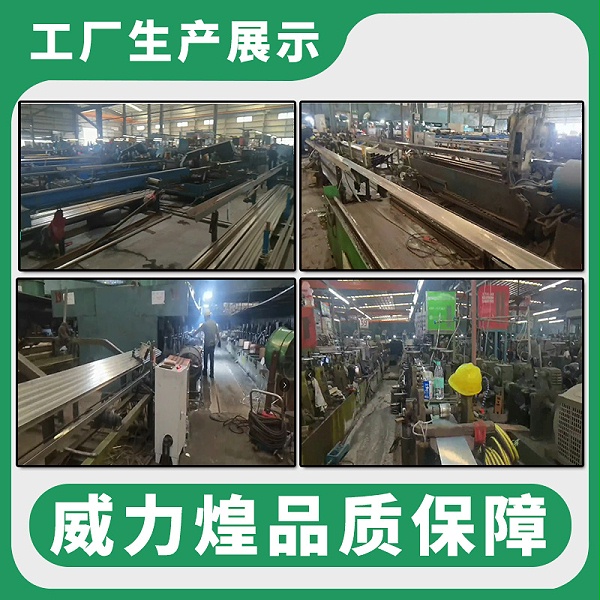At present, the raw materials in stainless steel pipe factories have different qualities and are passed off as good ones. During the raw material procurement process, strict control and management should be exercised. First of all, suppliers should be evaluated and selected. Evaluation reports and quality records of suppliers should be established, and the procurement information should be clear and complete. Secondly, there should be a quality inspection report from the manufacturer. Thirdly, laboratory tests and analyses should be conducted on the materials purchased and returned to the factory. It is recommended to purchase from large steel mills.

Extrusion moldingZThe major advantage is that during the extrusion process, through the feeding method,"UThe wall thickness of the "type groove" and the "three-way pull mouth" does not decrease, meeting the product quality requirements. The advantage of the bulging process is that the processing performance is relatively stable, the surface is smooth and the rebound is small, while the disadvantage is that the wall thickness of the pipe is reduced.
Whether the extrusion process or the expansion process is adopted, ensuring the thickness of the pipe wall and the quality are the prerequisites, and they are also the concrete manifestations of the enterprise's requirements for cost, quality and technology. In the domestic market, there are often manufacturers promoting overly cheap stainless steel pipes to customers. Most of them sacrifice the wall thickness and strength of the pipes, which poses a hidden danger to the connection and safety of thin-walled stainless steel pipes.
3Solid solution is an indispensable process for improving the quality of pipe fittings
The solution treatment process can eliminate the stress and intergranular changes generated during the production process, which is well known to all, although solution treatment will increase the cost per ton2600-2800Between the elements, but it is an important measure to enhance the anti-corrosion ability. Solution treatment should be carried out after the pipe fitting is formed and processed to truly play a protective role and cannot be omitted.
In the future, the stainless steel pipe market in China will experience rapid growth and expand into multiple fields. This is the current development trend, which is beyond doubt. As for how enterprises should respond to this development, while doing a good job in quality management such as stainless steel materials, forming processes, wall thickness changes, and solution treatment (heat treatment), they must also ensure the implementation and guidance of product quality and technical specifications. Enabling users to have a better understanding of the product's functions, usage and maintenance, accelerating the popularization of stainless steel water supply pipes and increasing their market share, and promoting the application of stainless steel pipes in multiple fields is a systematic project that still requires the cooperation and efforts of all links and aspects.
1Cost and cost performance. The one-time investment cost of stainless steel water pipes is approximately twice that of ordinary galvanized pipesPPRIt is as tall as the composite water pipe50%Left and right. However, if the entire life cycle cost of the building is taken into account, the average cost advantage of stainless steel water pipes becomes very obvious.
The service life of stainless steel pipes is generally70In years, the service life of galvanized pipes is approximately10It takes about a year, and the cost of replacing the pipeline is much higher than the initial investment. Stainless steel pipes are currently availableZSuitable water delivery pipes.
2The wall thickness of stainless steel pipes. From the perspectives of safety and economy, we suggestDN15-DN50Selection of stainless steel pipesGB/T19228.2-2011As stipulated in the standardIIThe wall thickness of the seriesDN65-DN100The above-mentioned stainless steel pipes are selectedGB/T19228.2-2011As stipulated in the standardIThe wall thickness of the series is that of thin-walled stainless steel pipesZOptimal wall thickness selection.
3Post-installation and post-use protection. All stainless steels have excellent corrosion resistance. When stainless steel products are placed in slightly acidic or slightly alkaline environments for a long time, they will also be corroded. This corrosion not only erodes the surface of the stainless steel products, but more importantly, it corrodes the intergranular structure of the stainless steel products. Secondly, high-humidity environments also cause corrosion to stainless steel. If stainless steel is exposed to a high-humidity environment for a long time, it will also cause corrosion to stainless steel products. Thirdly, in a dusty environment, it can also cause corrosion of the products, reducing the service life of stainless steel pipes.
4Pay attention to the water used in the pipeline pressure test. It is essential to use clean tap water for the pressure test. It is strictly prohibited to use engineering wastewater or unclean river water, well water or groundwater, as this will cause corrosion to the stainless steel pipes.


